Palace of Westminster and Westminster Abbey including St Margaret’s Church
By David Angel
What is the Westminster UNESCO site?
The Westminster UNESCO World Heritage site consists of three separate buildings on Parliament Square in the City of Westminster, part of the metropolis of London, capital of the United Kingdom.
Disclosure: This article contains affiliate links. Making a purchase through an affiliate link will mean a small commission for this website. This will not affect your price.
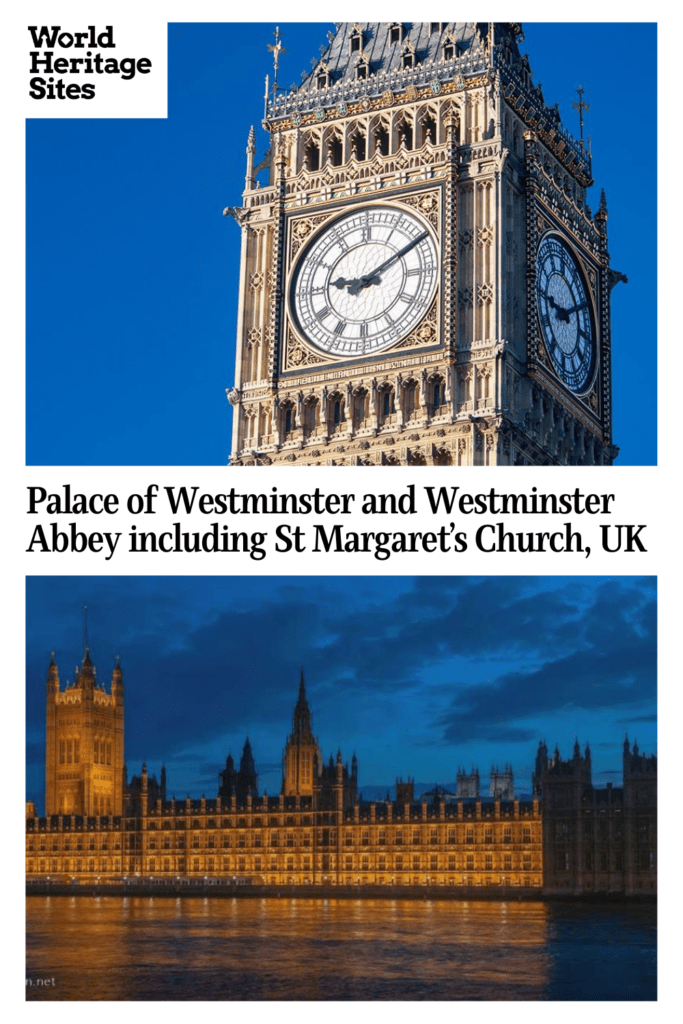
The Palace of Westminster – also known as the Houses of Parliament – is home to both chambers of government in the United Kingdom. It’s a masterpiece of 19th-century Gothic Revival architecture, with a few surviving medieval elements, and has become a symbol of democracy throughout the world.
Its clock tower, the Elizabeth Tower, often referred to as Big Ben, is one of the most famous London landmarks, and one of the most recognizable symbols of Great Britain around the world.
Westminster Abbey has been the coronation church of English (and later British) monarchs since the 11th century. It has been the setting of many other events of significance, including royal weddings and state funerals. It is also the final resting place of many English monarchs and great British writers, artists and scientists.
St Margaret’s Church, situated a few metres from the north transept of Westminster Abbey, is a fine example of a late Gothic-English Perpendicular-style church, and it has served as the parish church of the House of Commons since 1614.
Why is the Westminster site a UNESCO World Heritage site?
According to UNESCO, the three elements of the site, ”have symbolized monarchy, religion and power since … the 11th century AD.” They “represent the journey from a feudal society to a modern democracy and show the intertwined history of church, monarchy and state.”
They are also examples of some of the finest civic and ecclesiastical architecture in the British Isles.
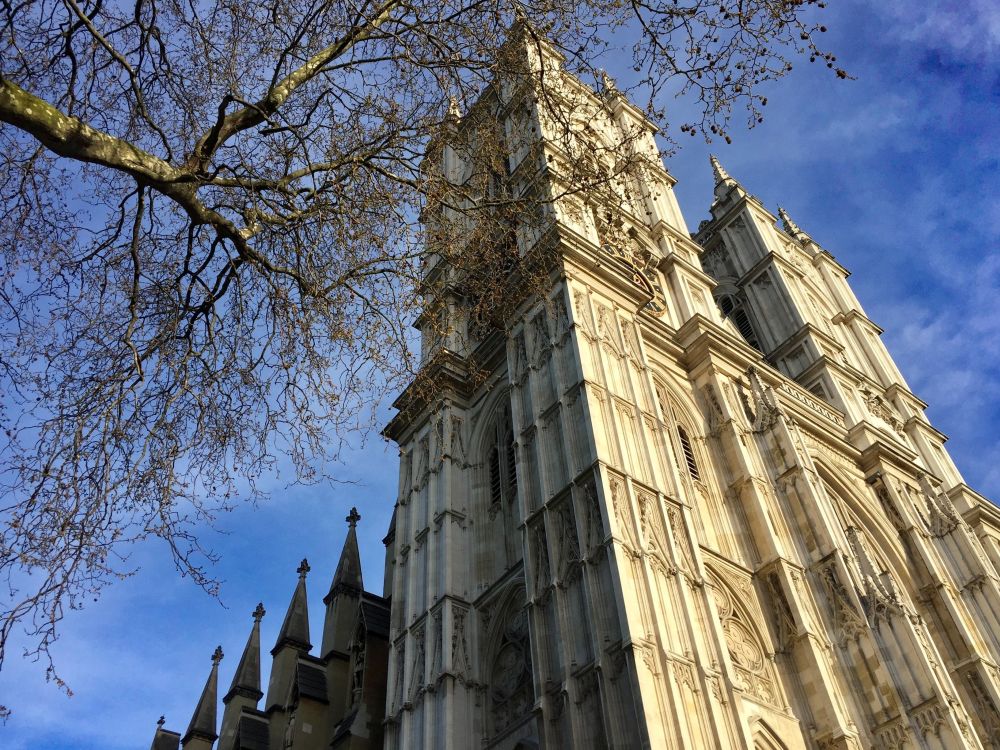
What can you expect on a visit to Westminster?
The Palace of Westminster
The Palace of Westminster is one of the greatest British buildings. After a fire in 1834, the building was rebuilt in Gothic Revival style, with an emphasis on the later, English Perpendicular, Gothic phase.
The Clock Tower and Big Ben are its most famous external features, along with the Victoria Tower at the opposite end. Big Ben has just undergone a six-year restoration, and the guided tour of the tower – previously only available to UK residents – has not yet been reintroduced.
However, Big Ben – traditionally one of the most popular photo opportunities in London – is free from scaffolding once again. A great many visitors simply walk around Parliament Square taking photographs, and the tower is wonderfully photogenic.
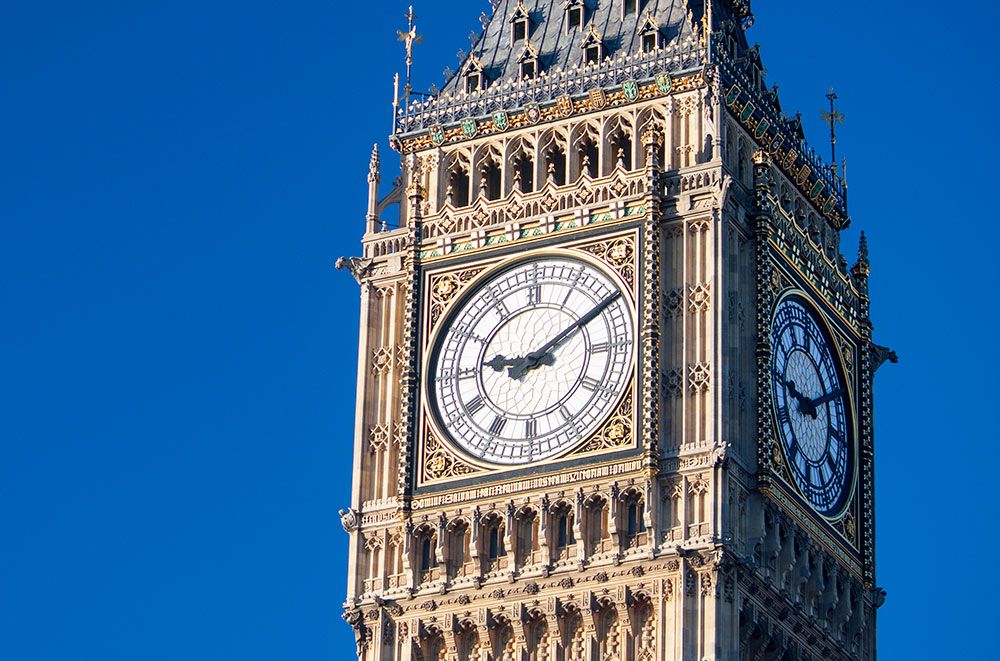
The Houses of Parliament guided tour – currently offered in English only – covers both chambers, the House of Commons and the House of Lords; and the splendid Westminster Hall, the oldest surviving part of the current Palace of Westminster.
You can also visit the House of Commons to watch either Prime Minister’s Questions (PMQs) or a routine debate. In both instances, you are able to watch proceedings from the public gallery, and the experience is free. You do, however, need to book tickets to see PMQs, which is the most keenly-anticipated part of the average political week, a fascinating piece of political theatre in which questions do occasionally get answered.
As for debates, it’s pot luck. It may be an enthralling experience, or it may be stultifying.
Westminster Abbey
Westminster Abbey spans the whole of the Gothic period, from the 13th century and the reign of Henry III (1216 to 1272) to the early 16th century, when the Lady Chapel (at the east end of the church) was built.

In terms of layout, the Abbey was inspired by great French Gothic cathedrals in Chartres, Amiens and Reims. Its most English feature is the intricate fan vaulting of the Lady Chapel, one of the finest examples of English Perpendicular Gothic architecture.
Westminster Abbey is crammed with history. It’s the nearest thing the UK has to a national church, and also is the closest it has to a national Pantheon like in Paris or Lisbon. Seventeen monarchs are buried there, including Edward I, Henry V, Henry VII and Elizabeth I.
Many great British figures are also interred there, including writers Geoffrey Chaucer and Charles Dickens, and scientists Sir Isaac Newton, Charles Darwin and Sir Stephen Hawking.
St Margaret’s Church
St Margaret’s Church, the smallest and least-known part of the Westminster World Heritage Site, is a real surprise. It has some wonderful 16th and 20th-century stained glass – the latter by renowned abstract artist John Piper – and some Parliamentary paraphernalia, such as kneelers with the House of Commons portcullis symbol. There are also some fine memorials, particularly the one to Blanche Parry, personal maid to Queen Elizabeth I.
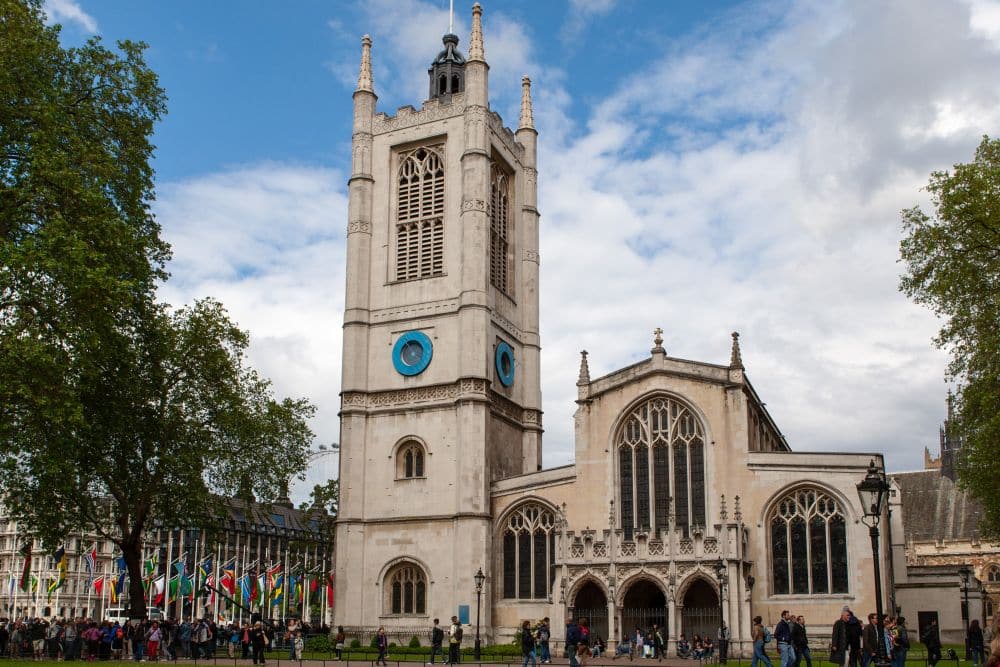
Is Westminster worth visiting?
All three parts of the Westminster UNESCO World Heritage Site are worth visiting.
Of the three constituent parts, Westminster Abbey has the most to see. It’s one of the great Gothic churches of Europe, and is packed with fascinating history spanning a millennium. It’s one of the most compelling reasons to visit London, and worth a bare minimum of two hours of your time.
Visiting the Houses of Parliament is also a memorable experience, though bear in mind that tour numbers are much lower than the likes of Westminster Abbey. The tours are very informative, with many fascinating stories about the Palace of Westminster.
Assuming that booking schedules allow, you should be able to visit all three buildings in the World Heritage site in one day.
What sort of travelers would like Westminster?
Anyone with even a passing interest in either British history, politics or church architecture should go out of their way to visit the Westminster World Heritage site.
The histories of the three buildings – and the institutions they represent – are very much intertwined, so visitors interested in history, politics or architecture would find all three buildings fascinating.
Westminster Abbey is also a wonderful introduction to either history or churches for children.
Book your London accommodations here.
Tips for visiting Westminster
Visiting the Palace of Westminster
If you’re visiting the Palace of Westminster, you need to book your guided tour online, as a limited number of spaces are available daily.
Also, bear in mind that some tours of the Houses of Parliament require you to be a UK resident to be able to participate.
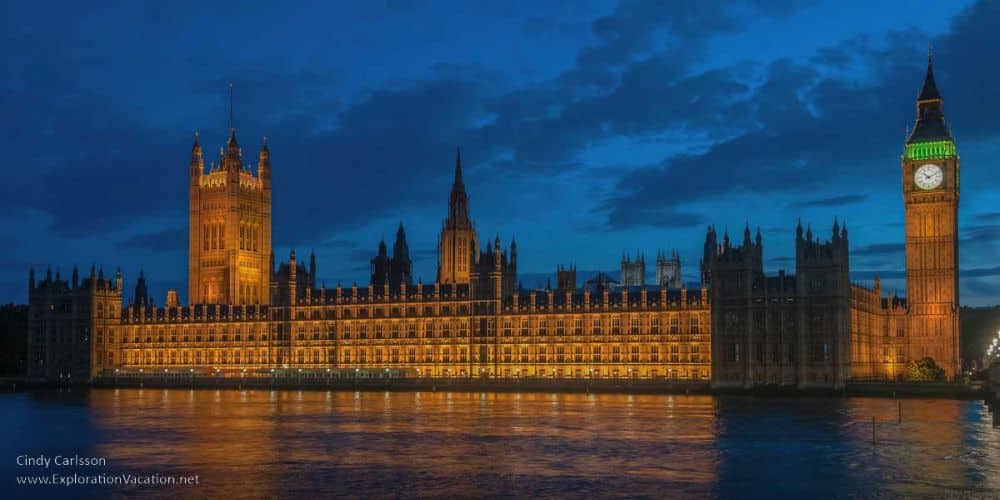
Visiting Westminster Abbey
If visiting Westminster Abbey, it’s strongly advisable to book your entry slot online. This is no guarantee of avoiding some queuing, but is a guarantee of queuing a great deal less than ‘walk-up’ visitors who sometimes have to wait an hour or two outside before entering the Abbey.
The standard ticket at Westminster Abbey gives you access to the chancel, choir and chapels, but you need to book yourself onto a guided tour if you plan to see a small number of restricted areas, including the Shrine of St Edward the Confessor.
The only time you can visit Westminster Abbey for free is if you attend a service. If you do attend a Holy Communion, you may have a short time to look around, but will normally be seated somewhere in the nave or transepts either side of the crossing and nave altar. It’s an amazing experience, but don’t count on being able to see many of the highlights in the chancel, which is usually closed off for services.
Evensong in Westminster Abbey is normally a smaller, more intimate affair, held in the magnificent Quire. It is usually a Sung Evensong, with the Choir singing the entire service. This is an unforgettable experience – you get to sit in the stunning lamp-lit quire stalls, and hear choral music of the highest standard from just a few feet away.
Visiting St Margaret’s Church
St Margaret’s Church is the only part of the Westminster World Heritage site where you can expect to walk up and go straight inside. It’s also free to visit.
The Westminster World Heritage site is one of four such sites in London. The nearest is the Tower of London, two miles downriver overlooking the River Thames. Maritime Greenwich is further to the east, and the Royal Botanic Gardens, Kew, is in the far west of metropolitan London.
Where is Westminster?
London is located in the south-east of England, and it is by far the largest city in the United Kingdom. The nearest major British city is Birmingham, as little as 1 hour 25 minutes away by train and 2 hours by car. Manchester, in the north-west of England, is around 2 hours 30 minutes away by train, or a 4-hour drive. London is between 2 and 3 hours from Paris, France, by train.
Westminster is located right in the heart of London at Parliament Square, less than 1 km from the point from which all distances to and from London are measured.
Car travel within Central London is generally discouraged – indeed there is a daily congestion charge payable by all drivers entering the designated central zone. The heavy traffic in the Central London area usually deters most drivers, who generally use park-and-ride facilities at stations on the outskirts of London, travelling into the city from there. Parking within Central London is also difficult and very expensive.
Public transport is by far the easiest option for reaching Parliament Square, the location of all three elements of the Westminster World Heritage Site. The Westminster Tube (Underground) station is directly across the street from the Elizabeth Tower, and three lines – the Circle, District and Jubilee – stop there. Four bus routes pass through the square, with a stop 100 metres (328 feet) from Westminster Abbey on Victoria Street.
The nearest mainline train stations are Victoria and Charing Cross, and the number 11 bus runs between these, passing Parliament Square en route.
Further information
For information on visiting the Houses of Parliaments, including tours, tickets and attending debates, see their website here.
Information on visiting Westminster Abbey, including tickets and tours, can be found here.
For information on visiting St Margaret’s Church, with opening times, check the website here.
Have you been to any part of the Westminster site? If so, do you have any additional information or advice about this UNESCO World Heritage site? Please add your comments below!
